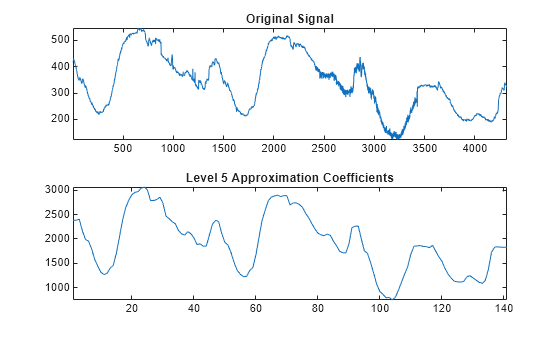appcoef
1-D approximation coefficients
Description
Examples
Input Arguments
Output Arguments
Algorithms
The input vectors c and l contain all the
information about the signal decomposition.
Let NMAX = length(l)-2; then c = [A(NMAX) D(NMAX) ...
D(1)] where A and the D are vectors.
If N = NMAX, then a simple extraction is done; otherwise,
appcoef computes iteratively the approximation coefficients
using the inverse wavelet transform.
